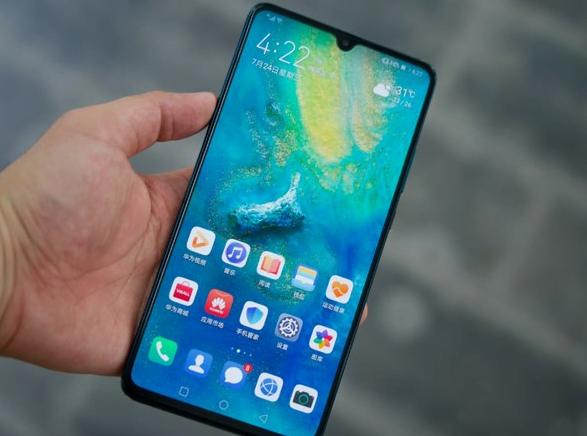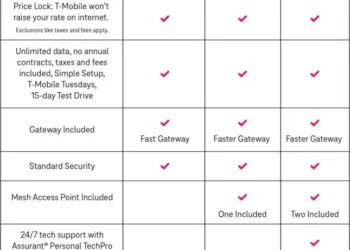Since the issuance of 5G licenses, domestic mobile phone manufacturers and operators have adopted various methods to “start” their own 5G products.
Online advertising, the PPT of the conference, the banner of the mobile phone store downstairs… These widely publicized propaganda people can’t help but think that human beings willfully enter the 5G era tomorrow.
However, in fact, although domestic operators have already prepared for 5G, it is still a long time from our true entry into the 5G world.
Having said that, even if we are still in the 4G era, the mobile phone that is the front-end of communication has already begun to step into the 5G field.

On the eve of August, Huawei released the first commercial 5G smartphone in China, Huawei Mate 20 X 5G.
Compared with the Mate 20 X that we have contacted before, the biggest highlight of the machine is the Barron 5000 baseband, which is compatible with the 5G network of NSA and SA networking.
This is what we often call “dual-mode 5G.”

Then, under the blessing of 5G, what kind of experience upgrade can Huawei Mate 20 X(5G) bring to us? After using 5G, how will it change its heat and battery life? Where is the 5G network now, how fast is it?
Taking this opportunity, we carried out a product interpretation and 5G signal evaluation of Huawei Mate 20 X (5G) with these 5G puzzles.
Huawei Mate 20 X 5G
Since Huawei Mate 20 X (5G) is based on Mate 20 X upgrade, when I first started this mobile phone, it immediately gave me a feeling of deja vu.
Since I experienced Mate 20 X since the London conference in October last year, I have never been exposed to such a large mobile phone. Now I have reunited with it, making me feel like a friend who has been away for half a year.
Display
The Mate 20 X always gives me the feeling of a “small computer” because it has a screen of 7.2 inches. If it was 5 years ago, it was a tablet phone and a big block. But today, with the emphasis on screen ratio, this size of a mobile phone can already be put into my loose trouser pocket.
The Huawei Mate 20 X (5G) continues the Mate 20 X design, with a 7.2-inch 2244 x 1080 resolution screen, capacitive fingerprint recognition on the back, and the Mate 20 Series iconic four-eye three-camera.

The addition of the 5G module did not have much impact on the weight of the new machine. On the book data, the machine weighs about 233 grams, which is consistent with Mate 20 X.
In addition to the huge body size that allows people to identify the model, the Mate 20 X (5G) also has a lot of details in the details, it is not difficult to recognize that this is a 5G mobile phone, or Said to be Huawei’s Mate 20 X (5G) version.
Processor and Storage
At the same time, Huawei Mate 20 X (5G) also has a large upgrade in the configuration. In addition to the SoC Kirin 980 and Baron 5000 baseband, the machine uses 8GB of memory + 256GB of storage space.
Of course, we can also expand the storage space of the device through the NM card.
In addition, the aircraft also supports Huawei’s own SuperCharge 40W super fast charge.
However, it may be due to the addition of a larger 5G module inside the fuselage, so Huawei had to design the location of the new module by reducing the space in the battery compartment.
Battery
Because of the data, the battery capacity of the Mate 20 X (5G) is 4200mAh, which is 800mAh less than the 5000mAh of the no-5G version.
Camera
As for the camera and system configuration, Huawei Mate 20 X (5G) and Mate 20 X has no hardware changes and are also equipped with a 40-megapixel wide-angle, 20-megapixel super-wide-angle and 8-megapixel telephoto.
The system is equipped with EMUI 9.1 and supports GPU Turbo 3.0.
Huawei Mate 20 X (5G) Price
Huawei Mate 20 X (5G) price in Singapore is Sgd: 1,364, In Malaysia is RM: 4,143, in Thailand is Thai Baht: 30,115 and in the United States and the United Kingdom is USD: 990.
City 5G cover ratio exceeds expectations
Note: The operator used in this test is China Unicom, so the performance of 5G signal and speed represents only one telecom operator of China Unicom.
The layout of the 5G base station has already started before the advent of the 5G mobile phone.
According to the plan announced by China Unicom in April this year, China Unicom will continue to cover 5G networks and cover 33 hotspots in 7 cities in China within this year and customize 5G network in N cities.
The seven cities include Beijing, Shanghai, Guangzhou, Shenzhen, Nanjing, Hangzhou, and Xiong’an. In 2020, China Unicom will officially open a 5G commercial.
The measured peak value is 6 times that of 4G, and the speed can continue to increase.
I was shocked by the speed of the 5G laying in Guangzhou. The speed improvement of 5G has refreshed my understanding of the speed of mobile networks.
In the test of 5 random scenes of SpeedTest, 5G can get test scores of multiple times of 4G network speed.

The best performance was the 666 Mbps downlink and the 71.7 Mbps uplink rate tested under the Guangzhou Tower (node: Guangzhou Telecom, Ping value 14 ms).
If converted to a wired network, it is equivalent to a broadband speed of 500 to 600M, which is 6 times higher than the current 4G network!
Before starting the road test, my colleague also gambled on a cup of tea with me. He said, “Guangzhou’s 5G is still testing, and the speed will definitely not exceed 500 Mbps.” It seems that after I finished this review, afternoon tea is It has fallen.
However, the 666 Mbps downlink is not the peak of 5G, because according to theoretical data, the 5G downlink peak is 1Gbps. Moreover, there have been domestic media in the road test to get a staggering 1110 Mbps.
So the current 666 Mbps is only 70% of the 5G peak, and there is still room to continue to rise.

Ultra-high-speed 5G, the future has come
The earliest device terminal that was confirmed to support the 5G network should be the folding screen model Huawei Mate X which was unveiled on MWC2019, and the biggest common point between it and Mate 20 X 5G should be that both are sitting larger. Dimensional body.
Let’s not talk about what kind of experience the big screen can bring in the 5G era, but the larger size of the fuselage will certainly provide more internal space. On the basis of the original 4G normal version, it only cuts a little battery space. It is possible to add a 5G baseband chip to the inside. In terms of time and R&D costs, the Mate 20 X 5G with a 7.2-inch screen is the most suitable in the Mate series.
Although the battery capacity has been reduced from 5000 mAh to 4200 mAh, the battery capacity of the Huawei Mate 20X 5G is still representative of the large battery in the current mobile phone market, just like the previous battery test results. With access of the 5G network, the power consumption of the mobile phone will increase, and the Huawei Mate 20 X 5G can still maintain the normal level of “one day at a time”.


